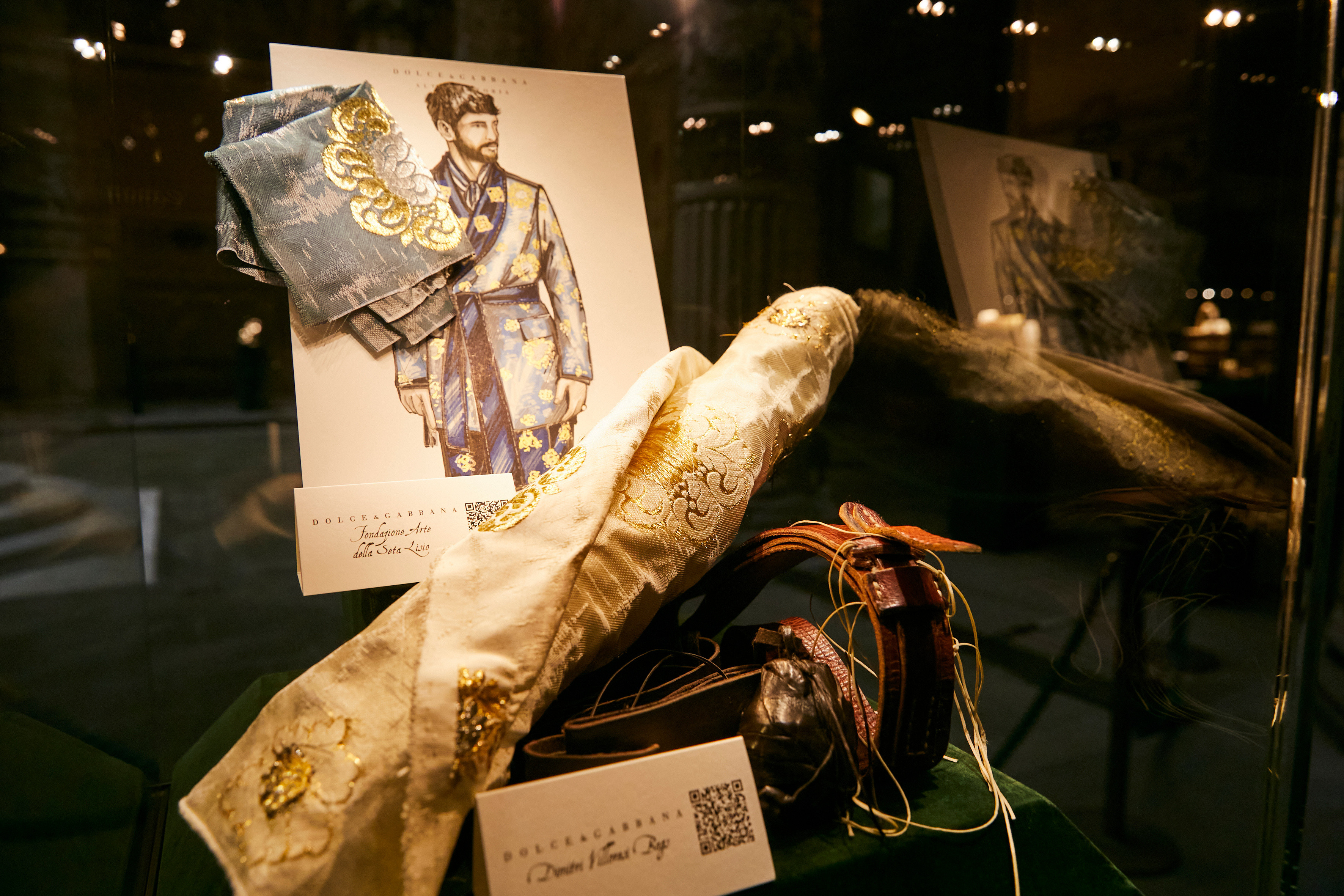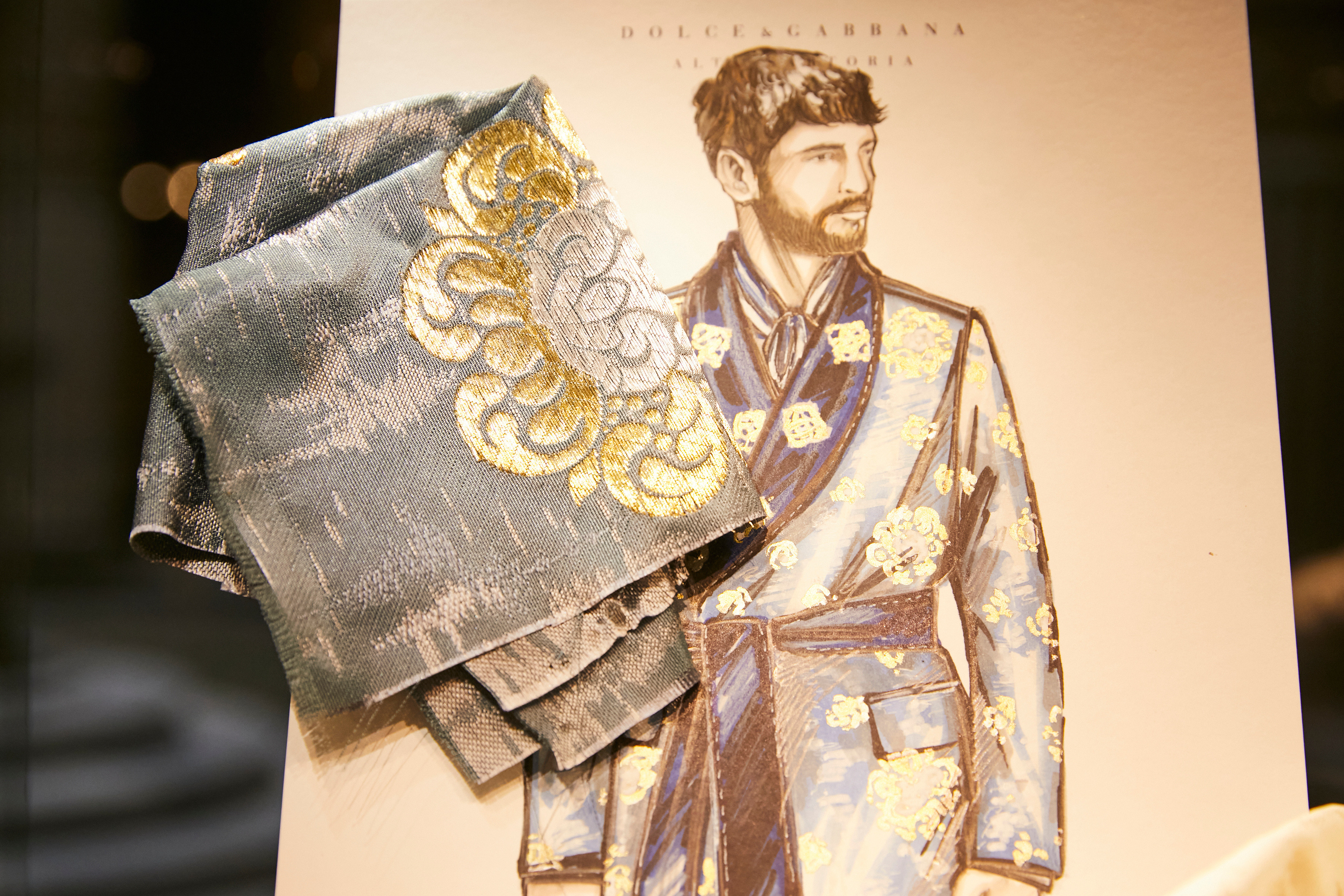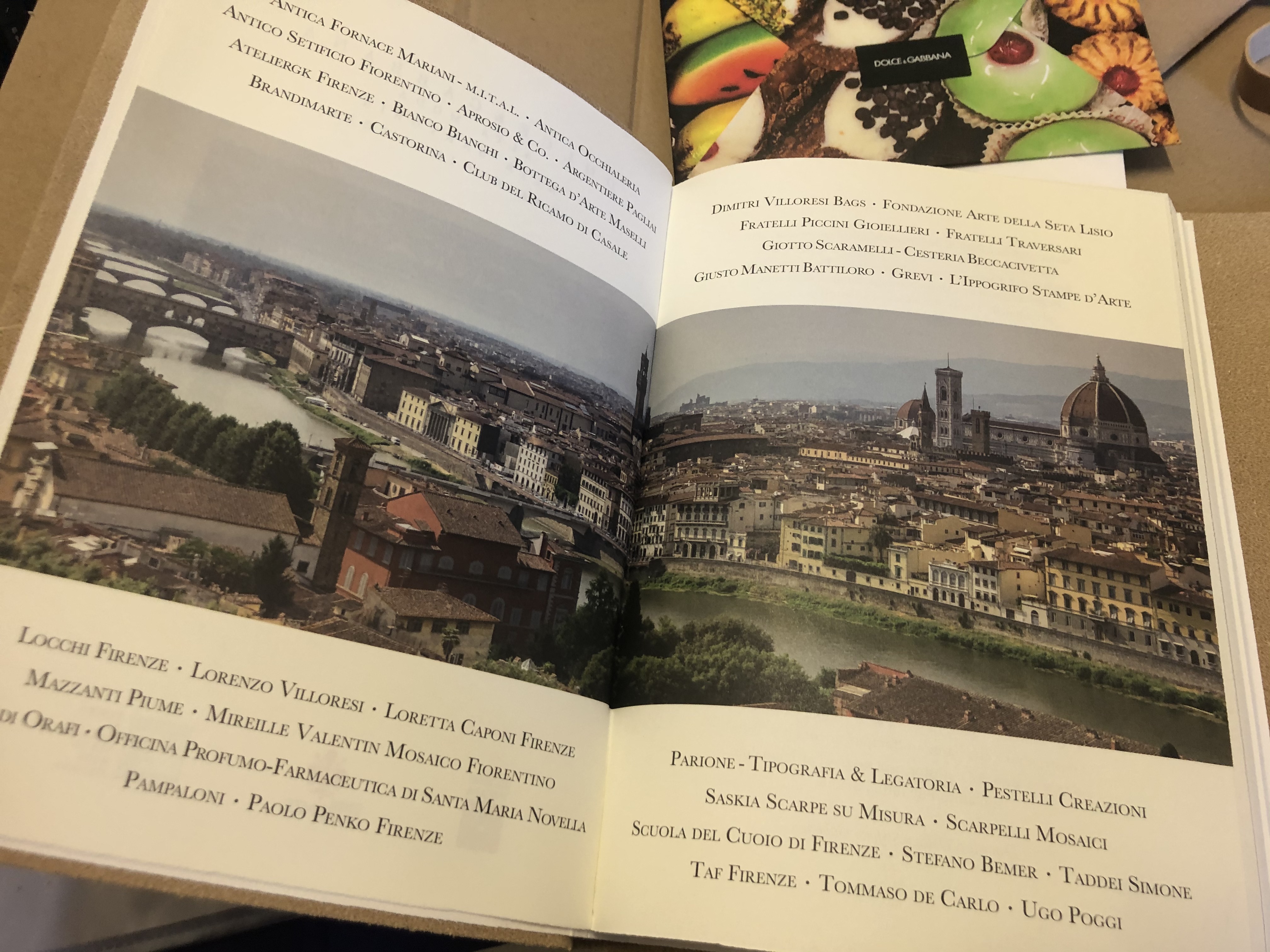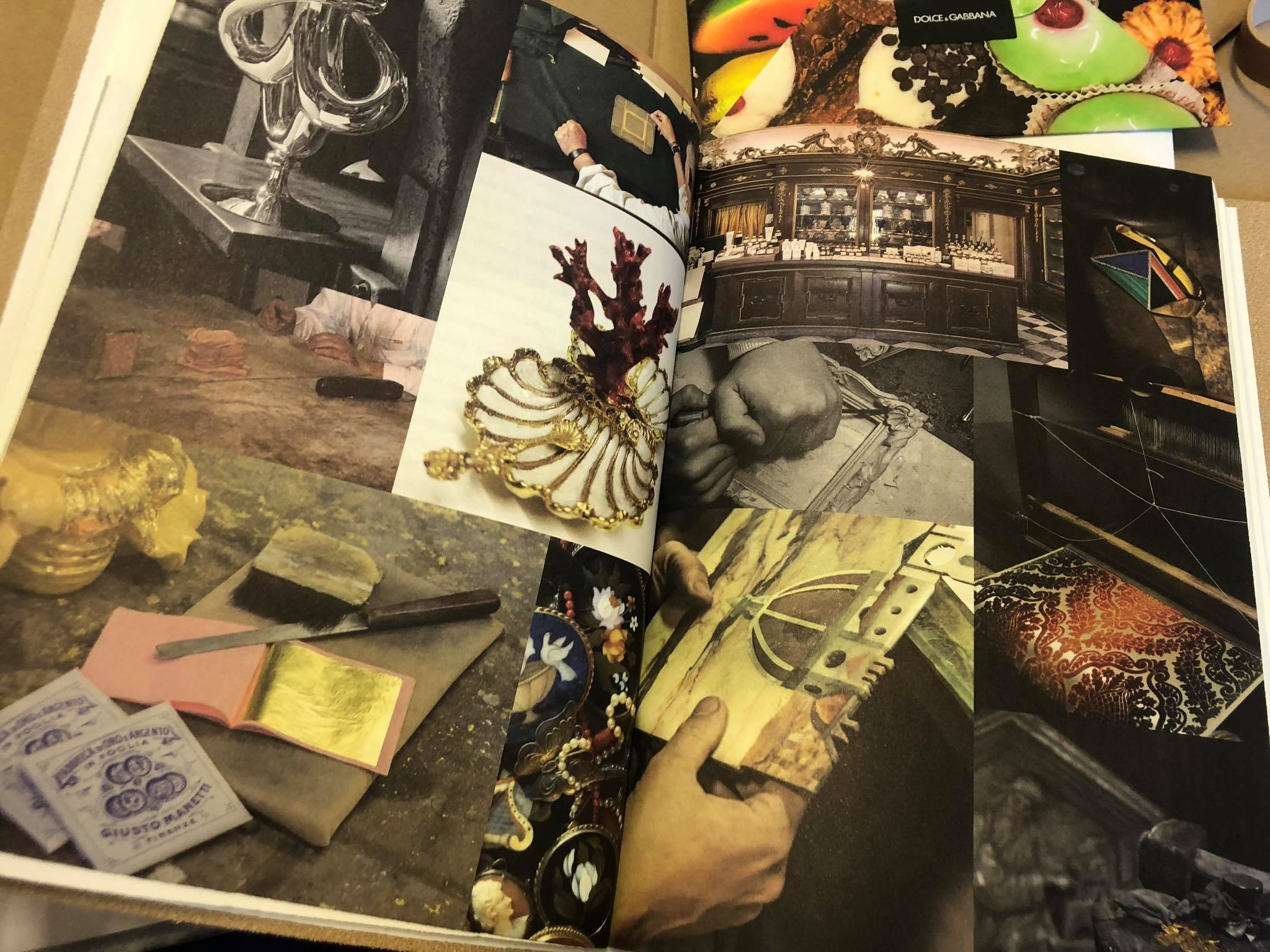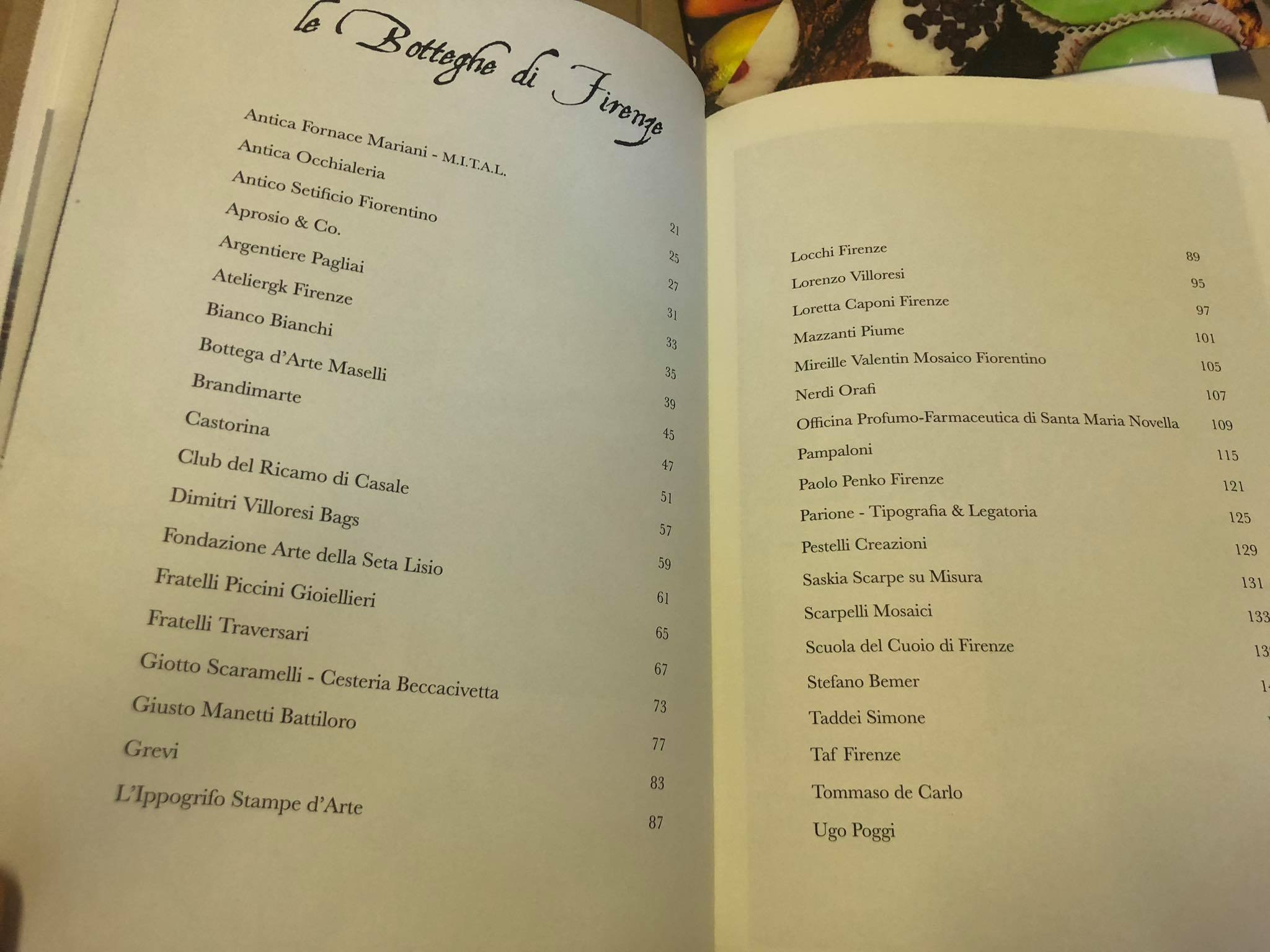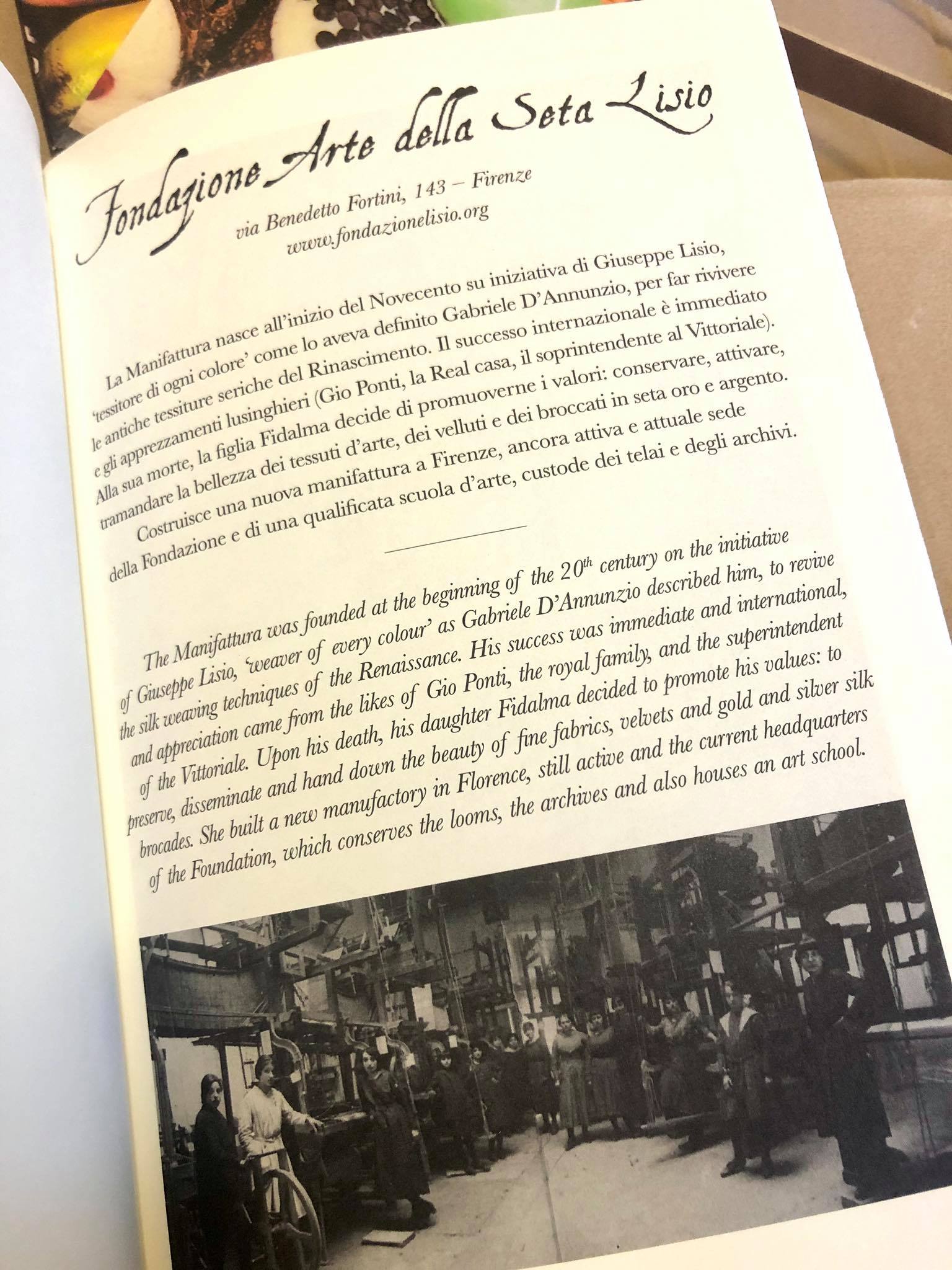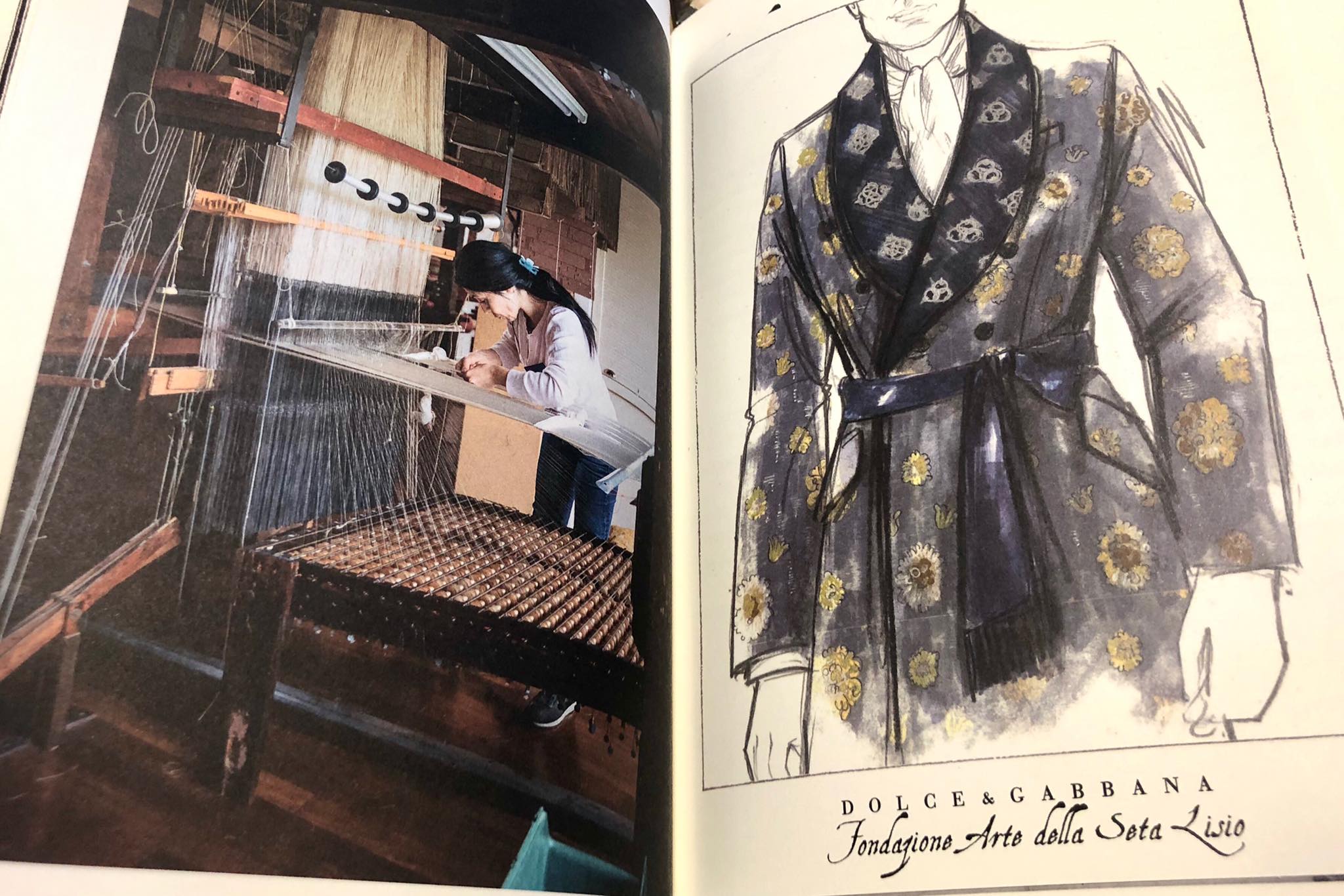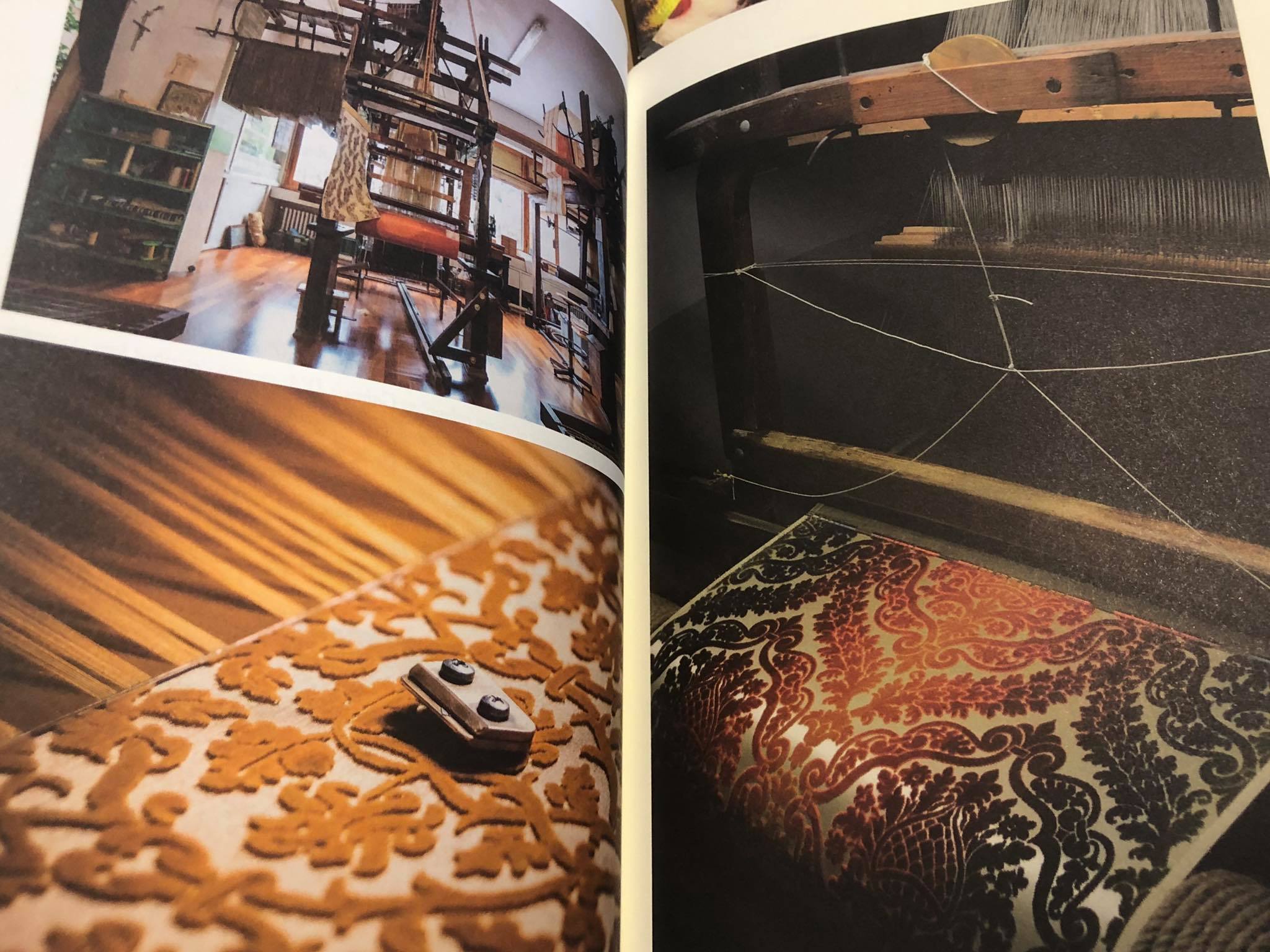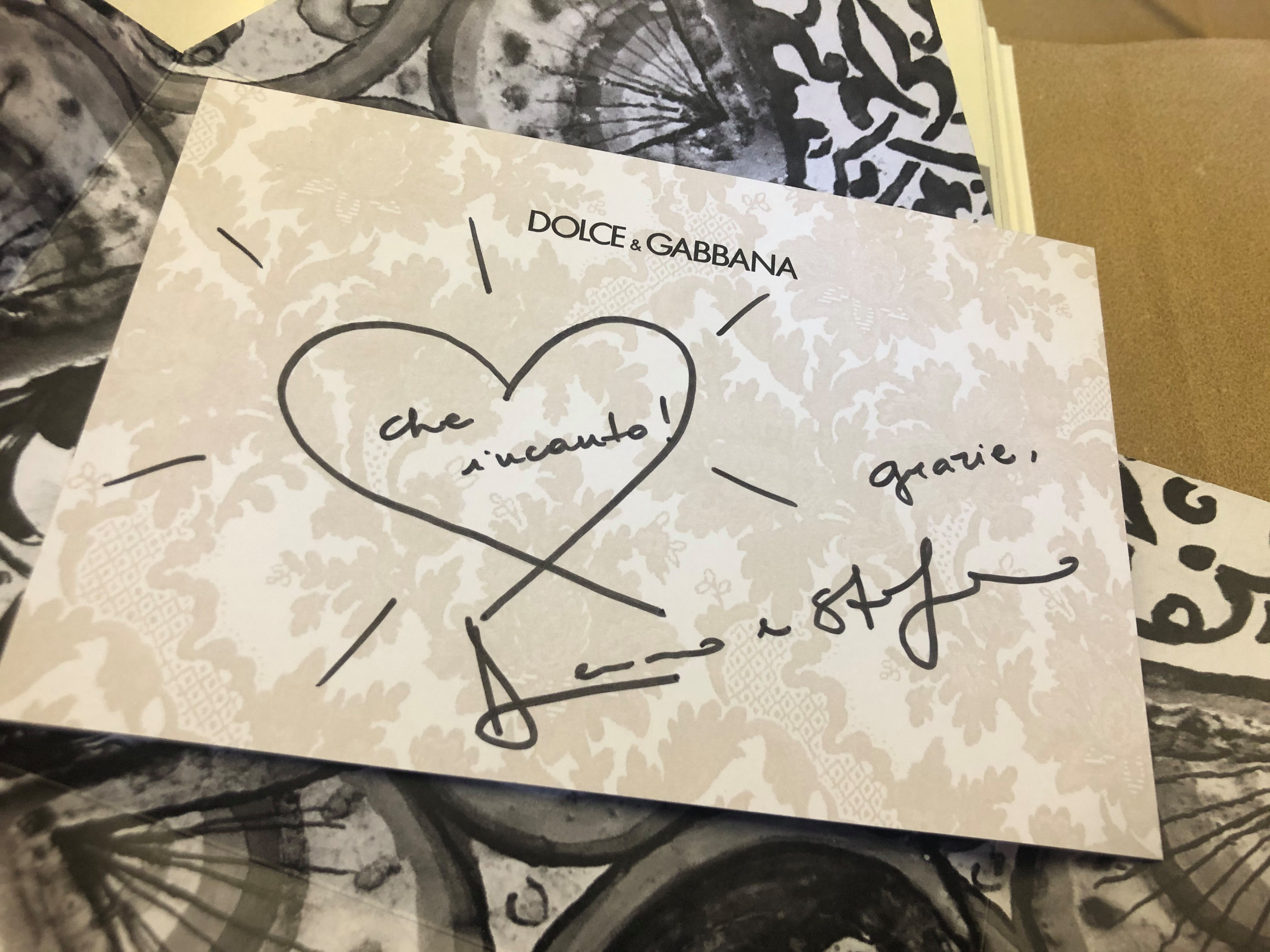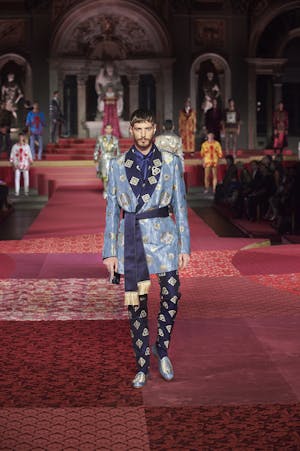
On the runway, two types of rare and precious brocades, hand-woven on the ancient Fondazione Lisio looms in distinctly Renaissance patterns.
The non-profit Fondazione Lisio – unique among the 38 artisan concerns selected by Domenico Dolce – carries forward the 114-year history of the Lisio textile manufactory. The foundation not only continues the manufacturing activity, perpetuating the techniques and quality standards which have set Lisio apart over time, but also trains the new generations at the textile arts school and promotes the culture of textile excellence through multiple cultural and publishing activities.
An important encounter with Domenico Dolce that provided strong testimony that excellence, consummate skill and a love for tradition and Made in Italy are still alive and going strong, and are still outstanding attributes of a heritage of enchantment and absolute beauty.
Dolce&Gabbana Fashion Show, Alta Sartoria - Salone dei Cinquecento, Palazzo Vecchio, Florence - September 2, 2020
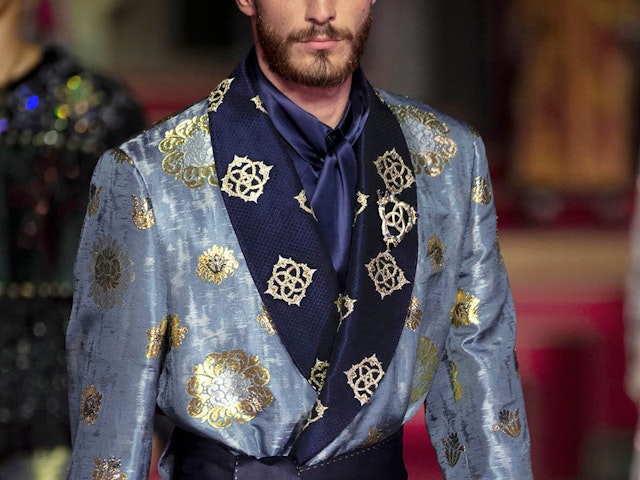
It is in such a context of absolute beauty that the Fondazione Arte della Seta Lisio brocades best express all their value, which can be measured in terms of the quality of the silks and gold and silver threads. But also in terms of time: passing the shuttles of silk, gold and silver one by one through the sheds, a weaver can produce only 7 cm of this priceless fabric per day. And in terms of the tradition of the time-honoured techniques of hand-weaving, by now extremely rare and of adherence to the historic-artistic iconographic references – in this case, Renaissance art – around which Fondazione Lisio’s historic archive revolves.
The Lisio tradition began in Florence, in 1906, when Giuseppe Lisio opened his first shop in Via dei Fossi and established his manufactory in the city’s Oltrarno district.
In perfect Renaissance style, he reproduced the model of the bottega where the master transmitted every aspect of his art and all its secrets to his apprentices and produced true masterpieces of high craftsmanship.
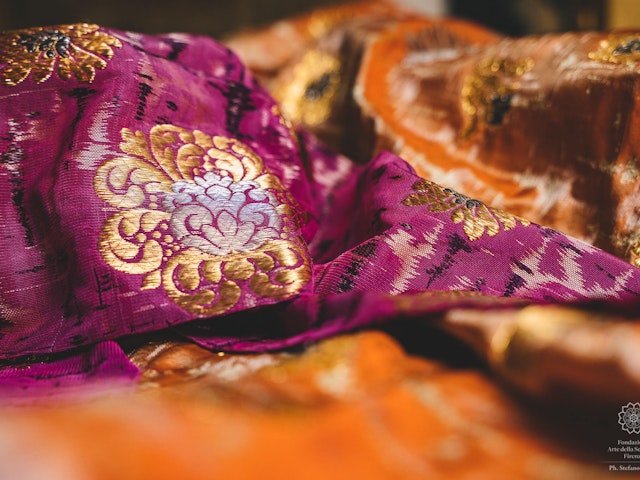
Lisio Foundation "Veronese" Brocade
The ‘Veronese’ brocade is the Gros de Tours liseré lancé brocade used for the Dolce&Gabbana coat. Production of this fabric, which proposes both the technique and the pattern of a mid-17th century sample, began in about 1915. The name given by Giuseppe Lisio to this cloth is that of artist Paolo Veronese who often made use of several of the same motifs, of Oriental origin, in his work and in particular in Venice Ruling with Justice and Peace on the ceiling of the Sala del Collegio in Palazzo Ducale in Venice.
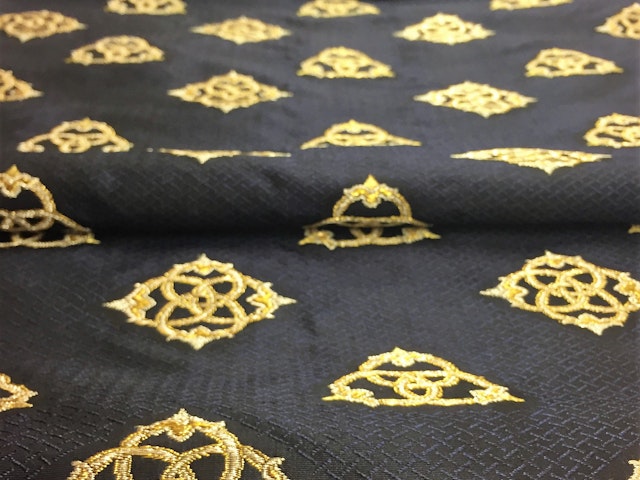
Lisio Foundation "Anelli" Brocade
The ‘Anelli’ brocade, a Gros de Tours liseré brocade chosen by Dolce&Gabbana for the trousers and the lapels of the coat, was set up on the loom for the first time in 1927. It is inspired by Sandro Botticelli’s Pallas and the Centaur (Galleria degli Uffizi, Florence), in which the goddess’s robes are decorated with Medici insignia.
Accessories from masters of the Florentine artistic crafts complete the Dolce&Gabbana total look in brocade:
the art of Master goldsmith Paolo Penko,
The three stones custom-cut for the piece are iolites, also known as ‘water sapphires’, whose shade of blue tending to violet is unique and unmistakable. One hundred brilliant-cut sapphires are set at the bases of the tines. The entire silver surface, even on the back and along the edges, is decorated with traditional burin-engraved spiralling tendrils and volutes, while the yellow gold is made even more precious by application of the exclusive penkato technique
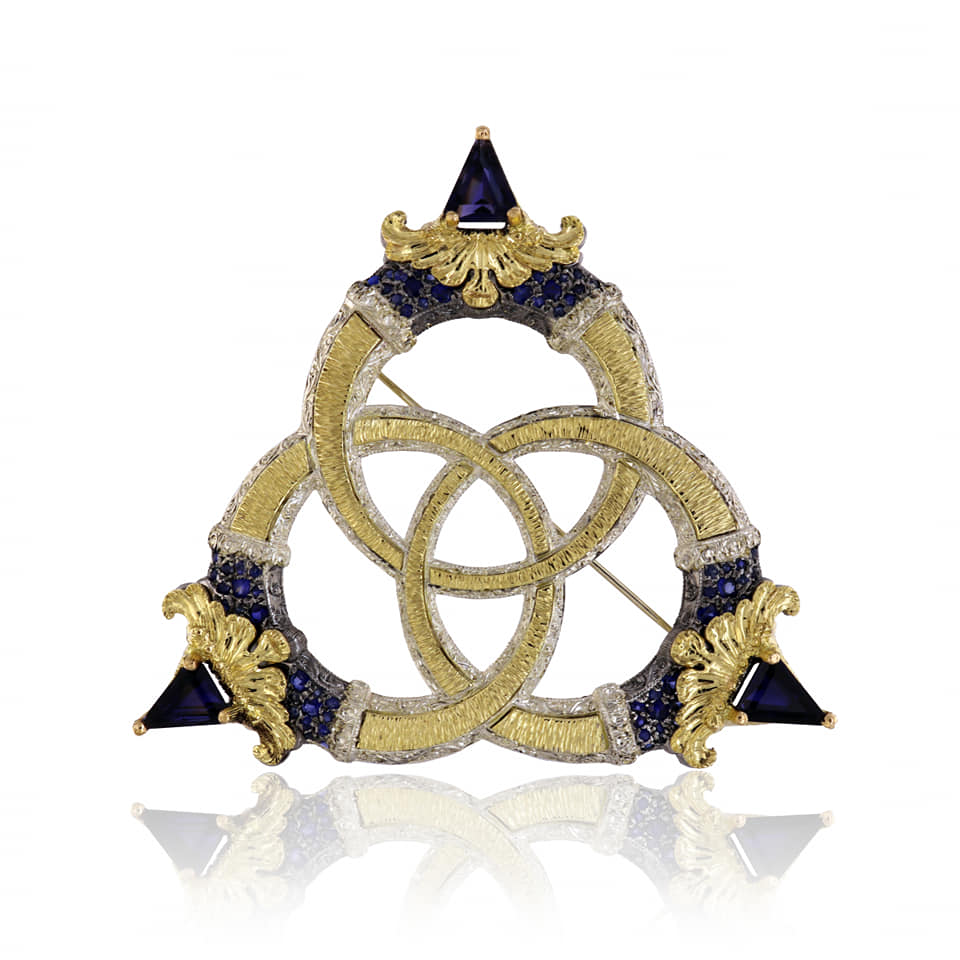
The precious hand-made shoes by Vivian Saskia Wittmer and the particular and valuable clutch-bag made in mosaico fiorentino bu Masters Scarpelli Mosaici.
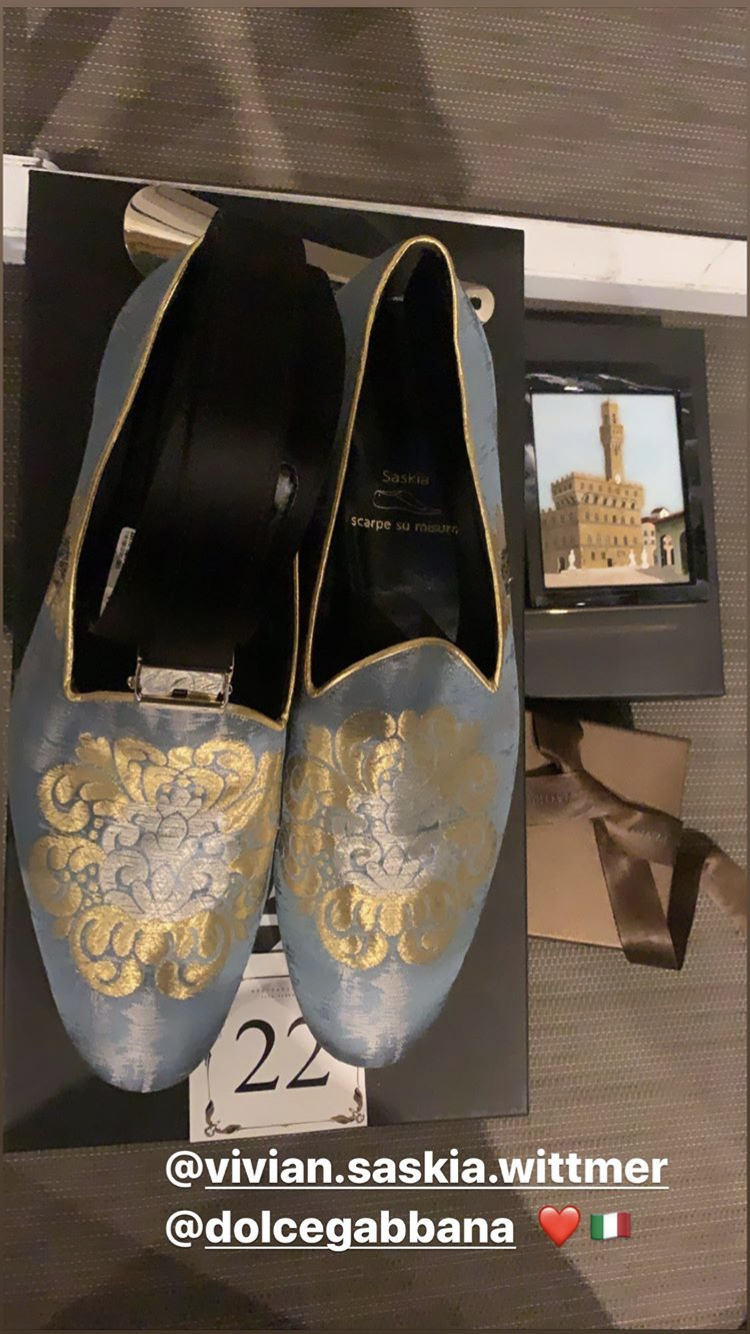
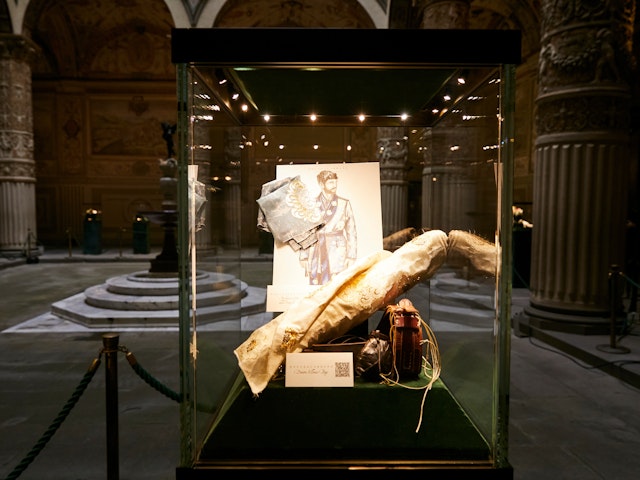
A BOOK RECOUNTS THE ARTISANS ON THE CATWALK IN SEPTEMBER WITH DOLCE&GABBANA
Artisans' works will be exhibited in Palazzo Vecchio until October, 15.
A special limited-edition book presents all the artisans that participated in ‘The Renaissance and Rebirth’ project.
From one end is Florence, a city where the art of savoir faire is protagonist, and from the other end are Stefano Gabbana and Domenico Dolce, who have always been champions of Made in Italy and ‘handmade’ items: together they have given life to an extraordinary project that brings men’s Alta Sartoria to Palazzo Vecchio and women’s Alta Moda to Villa Bardini with a series of pieces, from small accessories to maxi settings, created specifically for the occasion by master artisans who have made their expertise and experience available to create something new, for a different interpretation of tradition.
